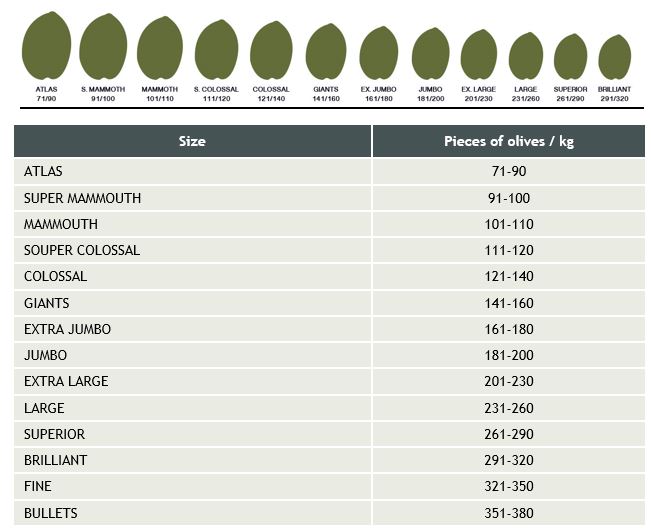The gemora (Brachos 39a) writes that the size כזית ‘olive’ that is referred to with regards to bracha (and most other shiurim) is a medium-sized olive (with the pit). This is explicitly mentioned in a mishna in Keilim 17:8 “The olive that was said was not an overly large or small olive rather a middle sized olive. This olive is known as the aguri olive.” Rabbi Avahu says that aguri was not the proper name of the olive rather it was either avruti [Avrusi after a locale where these choice olives were grown – Pnei Moshe Yerushalmi Bikkurim] or smrusi but it was called aguri as its oil was אגור בתוכו, held within. Rashi [[with the explanation of תפארת ישראל כלים שם אות נז]] explains this to mean that when ripe the juice of the olive is not absorbed in the flesh, like an apple, rather it is אגור within ready to leave like a grape. The Yerushalmi (Bikkurim chap 1 halacha 3) understands this differently “It is called aguri because its oil is retained (אגור) within. But do all other olives lose their oil? Rebbi Chanina says ‘all other olives absorb the rain and their oil comes out, but this olive when it rains on it, the oil stays inside.
The mishna says middle-sized olive, implying the middle size of the various grades of olives. (לשון הרמב”ם מכ”א יד:א “כל איסורי מאכלות שבתורה שיעורן בכזית בינוני). [[See Moznei Tzedek chapter 16 note 26 who seems to take this mostly for granted. The Chazon Ish (אוח לט א ד”ה והנה) writes that the middle size is determined by taking the largest and smallest olive and taking the median between them.]]
The Mishna Achrona (כלים שם) writes however that the mishna is telling us that we measure with the middle size of the Aguri olive, with the aguri being one of the larger sized olives. 
The usda lists 11 categories of olive sizes. These sizes are measured by olives per pound. I have yet to find documentation regarding how many olives there are in each category. The Sefer Moznei Tzedek Chapter 16 note 26 writes the smallest two categories are fairly uncommon so that the median olive probably belongs to the ‘mammoth’ category, whose olives are approx. 6.5cc.
Rabbi Chaim Beinish has an essay entitled שיעור כזית-מאמר in the back of his ספר מדות ושיעורי תורה. He writes that in Eretz Yisroel there are three (main) olive grades נאבלי, סורי, and מאליסי. He considers it difficult that the middle grade – סורי is the aguri of the gemora. [See however עולם הצמחים (זהרי) עמ’ 319 that there are 4 grades of olives that grow in Eretz Yisroel. [Rabbi Beinish also quotes from the sefer אוצר הצמים were the author posits that the Syrian olive variety called דהן is the same as the aguri of the gemora.]]
Regarding halacha the size of a Kezais is pegged to the egg and is not determined by measuring olives. The Shulchan Aruch (או”ח תפו) brings two opinions the opinion of Tosfos that a כזית is one half of an egg, while the Rambam (see משנה ברורה ס”ק א) is of the opinion that the olive is one-third of an egg.
The Aruch Hashulchan (יו”ד פה:ח) says that the determination of the average-sized olive is something that is not set rather it changes with the times. [[See ים של שלמה חולין פרק ג אות פח that it is not surprising that the olive has shrunk in size as we have seen other of the seven special species of Eretz Yisroel were previously much much larger.]] This is in contradiction with Rav Avraham Chaim Naeh (שיעורי תורה שער ה א-ב) that shiurim depend on the size of the fruit in the times of Chazal, not those of our times.
The Chazon Ish (או”ח לט:א) writes that even though שיעורים are הלכה למשה מסיני, nevertheless all that Moshe was told was that the middle-sized olive is the one for a kezais. It was the Chachomim who told us that the Aguri is the middle-sized. [[The study of shiurim is beyond the scope of this work, but for more on the topic the Chazon Ish’s קוטנרס השיעורים (או”ח ס’ לט) is required learning.]]
The Chazon Ish is of the opinion that the size of the olive is determined in each era and thus the shiur כזית according to the Chazon Ish is much smaller.

Leave a comment